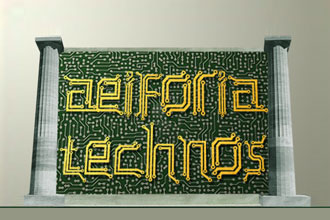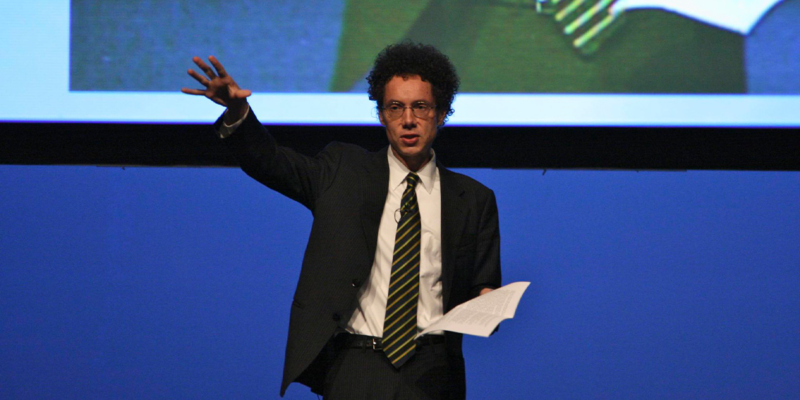rESPeCt – Find Out What That Means to Me
 There are many in the audiovisual technology industry who chide those of us who beat the drum for designing and implementing technology solutions in the built environment with a heavy focus on energy efficiency and sustainability. Their argument is one of profit versus performance, survivability versus conscience. Coming out of a major recession where many firms are holding on by a shoestring only bolsters their derision. Unfortunately they, in my opinion, are not looking at the forest through the trees, which is evident in the lack of conversation on the subject by several industry leaders. Profitability, performance, survivability and corporate conscience can all work hand in hand to not only move a struggling company into terra firma, but also help to extend the viability of customer relationships.
There are many in the audiovisual technology industry who chide those of us who beat the drum for designing and implementing technology solutions in the built environment with a heavy focus on energy efficiency and sustainability. Their argument is one of profit versus performance, survivability versus conscience. Coming out of a major recession where many firms are holding on by a shoestring only bolsters their derision. Unfortunately they, in my opinion, are not looking at the forest through the trees, which is evident in the lack of conversation on the subject by several industry leaders. Profitability, performance, survivability and corporate conscience can all work hand in hand to not only move a struggling company into terra firma, but also help to extend the viability of customer relationships.
Some of the biggest perceived roadblocks to being a partner in lowering a client’s carbon footprint are usually budget, lack of information and being risk adverse. What is often lacking by the service provider is a good understanding about financial mechanisms to fund energy efficient technology solutions and what solutions are available. Why do I feel this is misguided? The IT, security and other ICT allies all have been feverishly working to develop standards, best practices and funding mechanisms they can share with clients to implement what is fast becoming one of the largest and easiest to control, energy consumers — plug load systems. ICT manufacturers are also creating the necessary products to manage plug load technologies including servers, desk top PCs, networked security systems and many others. Like it or not, it is here and burying your head in the sand will only hasten the inevitability of another ICT industry knocking the audiovisual industry to the ground and stealing its candy.
Want proof? The United States’ largest landlord – the General Services Administration (GSA), is actively engaging with its tenants to reduce the total carbon footprint of its entire 7,000+ building inventory. This client, which many of us in the audiovisual industry work with, has developed sophisticated funding mechanisms to implement energy efficiency retrofits in its existing building stock as well as creating green technology design mandates in new construction. One of our recent projects, the Wayne Aspinal Federal Courthouse in Boulder, Colo., offers the proof in the pudding. It recently received LEED Platinum status and is being used by the GSA as a model for future retrofits moving forward. Plug load control and a smart technology management plan were a critical component to the success of the project.
The GSA’s most powerful tool in this is the Energy Savings Performance Contract (ESPC), where the capital costs for any retrofit are offset by the energy savings through efficient operations. This makes it scalable and allows for deep energy retrofits to existing buildings. The federal government has mandated a total reduction in energy use across many targeted areas, including building energy consumption not just in core and shell but through tenant use as well. The GSA has partnered with the Federal Energy Management Program (FEMP) to achieve the National Deep Energy Retrofits (NDER) program to work with the energy service providers and contractors to reduce the total energy consumption through the ESPC. This has increased energy savings already over the last couple of years from 18 percent to 39 percent with some projects even surpassing the 60 percent savings mark.
All eleven regions within the GSA’s purview have NDER contracts and are expected to increase the number substantially over the next several years, creating opportunity for consulting partnerships who are willing participants. Overseen by the FEMP, the work is bleeding into all other areas of federal sector work including the implementation of technology systems such as audiovisual and information transport. With such significant data available from these projects, and more to come, it is an easy case to make to the private sector to step up and make the investment towards energy efficient technology solutions as the demand continues to grow and the financial savings case just continues to further prove the point. The biggest barrier the ESPC has is not in the technical implementation of designs but in the breakdown of process and structure of integrated design which it continues to improve upon with each project. I suspect that this is the very same reason that so many in the audiovisual industry are throwing up their hands and becoming naysayers about walking down the path with clients towards energy efficiency.
So how can you get more involved and not become irrelevant? Here are a few ideas:
- Become integrated in the design process. It sounds simple and it really can be. You have to show you are an active participant and have value by understanding what is available to your client.
- Have meaningful interaction with facilities managers, occupants, as well as the money guys about a solid energy management solution.
- Understand that it is completely untrue that the cost of implementing more energy efficient deep impact solutions is going to cost more or have a longer payback. There is a mountain of scientific data that proves this out not just anecdotal evidence.
- Explore Energy Efficiency Measures (EEMs) using technical potential and whole building analysis. By partaking in a truly integrated design process you have this capability to provide and have meaningful dialog about this to make a compelling business case which only enhances your worth to the Client as a partner.
- Show your expertise in asset management, power management, and systems and building control solutions as viable solutions to reducing energy demand of plug load systems.
- Read and understand the impact of the International Green Construction Code and other mandates that will impact what you do whether you like it or not.
In this highly risk-adverse financial culture we have placed upon ourselves, I would challenge that it is a greater risk to the audiovisual industry to provide a poorly executed design that’s not thoroughly flushed out for load-reduction measures than it is to invest the time to be a partners with an invested energy efficient solutions provider. If you don’t do this, someone else in a different industry will because, like it or not, the train has left the station.
Another area that you can be helpful with is in operations protocol management. You know how these systems work and you can create control systems that can automate many features of a room, building or campus. The ESPC finds another challenge in engaging the occupants in energy savings. One-third of energy use is occupant driven, oftentimes with solutions AV integrators provide, such as video conferencing in a boardroom or classroom lecture technology. While the issues ESCOs have are limited to things like requiring sub-metering and power management features, the ongoing occupant energy reduction programs and measures require constant oversight and monitoring due to a constant turnover of not only technology but also staff. Good asset management solutions and a well thought out control system (taking much of the burden off of the user) go a long way towards energy efficiency.
Another solution we can provide that aids in our perceived relevance is remote management and monitoring of assets. With so many buildings, this has become a must-have for the GSA to track energy and asset use. The GSA currently has about 100 buildings it is tracking with more scheduled to come online.
If you think it is just the big federal government in the game, then you really haven’t been paying attention. Many institutions of higher education, Fortune 500 companies, local and state governments and healthcare institutions are also ramping this up as a solid viable cost savings measure that has the benefit of being sound environmentally and socially – the triple bottom line. The green tech business is one of the fastest growing economic sectors in the U.S., as a percentage of GDP, finding its way into homes and businesses alike. You can either be part of the team or find a new sport.





